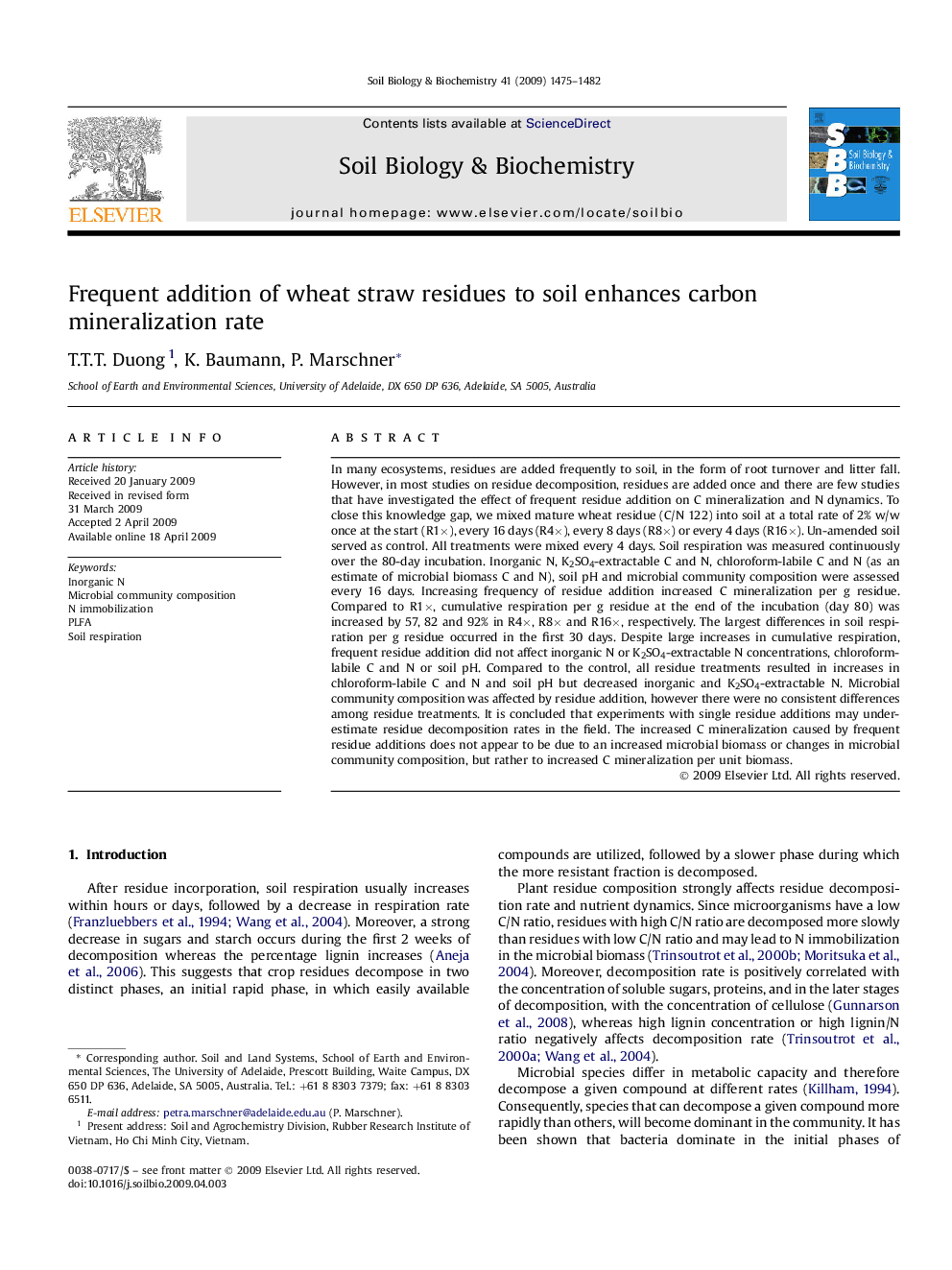| کد مقاله | کد نشریه | سال انتشار | مقاله انگلیسی | نسخه تمام متن |
|---|---|---|---|---|
| 2025210 | 1069988 | 2009 | 8 صفحه PDF | دانلود رایگان |

In many ecosystems, residues are added frequently to soil, in the form of root turnover and litter fall. However, in most studies on residue decomposition, residues are added once and there are few studies that have investigated the effect of frequent residue addition on C mineralization and N dynamics. To close this knowledge gap, we mixed mature wheat residue (C/N 122) into soil at a total rate of 2% w/w once at the start (R1×), every 16 days (R4×), every 8 days (R8×) or every 4 days (R16×). Un-amended soil served as control. All treatments were mixed every 4 days. Soil respiration was measured continuously over the 80-day incubation. Inorganic N, K2SO4-extractable C and N, chloroform-labile C and N (as an estimate of microbial biomass C and N), soil pH and microbial community composition were assessed every 16 days. Increasing frequency of residue addition increased C mineralization per g residue. Compared to R1×, cumulative respiration per g residue at the end of the incubation (day 80) was increased by 57, 82 and 92% in R4×, R8× and R16×, respectively. The largest differences in soil respiration per g residue occurred in the first 30 days. Despite large increases in cumulative respiration, frequent residue addition did not affect inorganic N or K2SO4-extractable N concentrations, chloroform-labile C and N or soil pH. Compared to the control, all residue treatments resulted in increases in chloroform-labile C and N and soil pH but decreased inorganic and K2SO4-extractable N. Microbial community composition was affected by residue addition, however there were no consistent differences among residue treatments. It is concluded that experiments with single residue additions may underestimate residue decomposition rates in the field. The increased C mineralization caused by frequent residue additions does not appear to be due to an increased microbial biomass or changes in microbial community composition, but rather to increased C mineralization per unit biomass.
Journal: Soil Biology and Biochemistry - Volume 41, Issue 7, July 2009, Pages 1475–1482